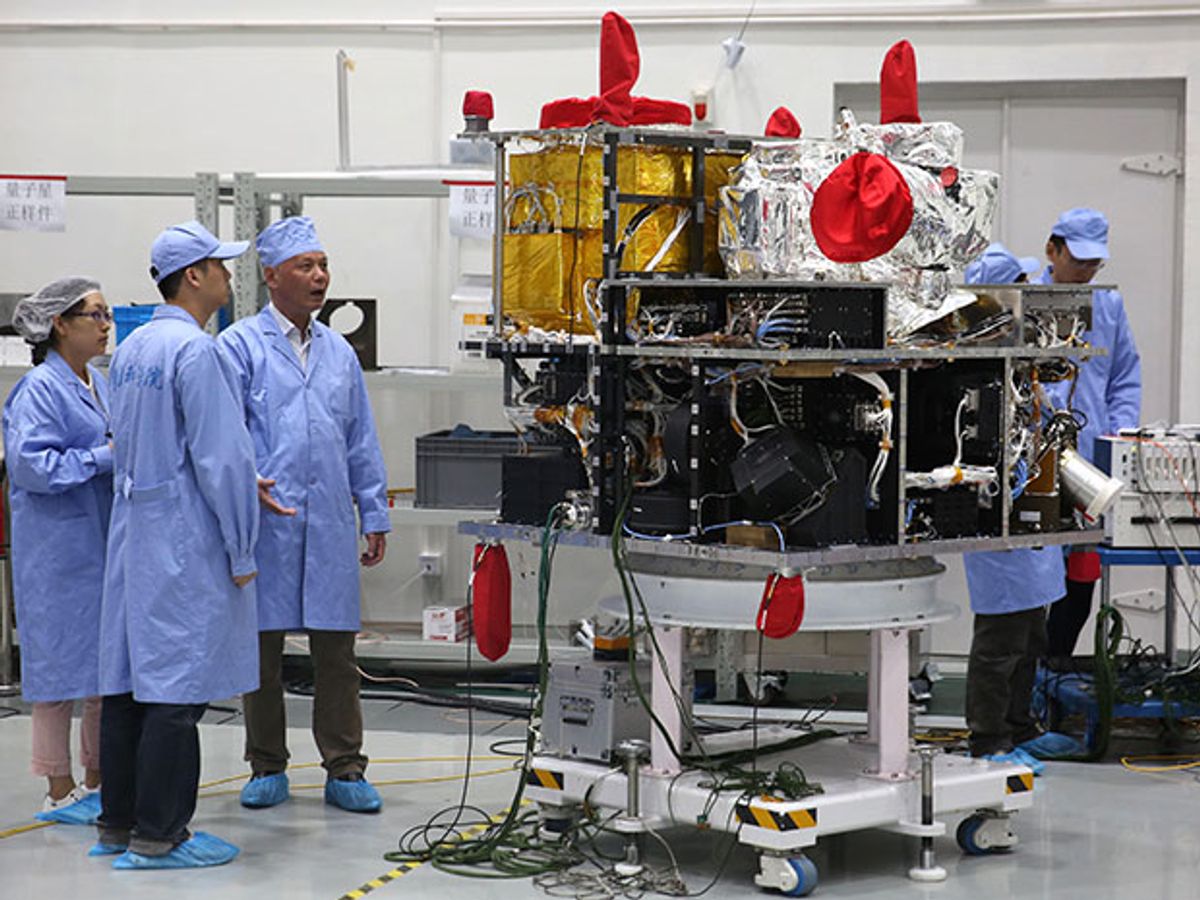The first spacecraft designed to perform quantum communications was launched into space today, from the Jiuquan Satellite Launch Center at 1:40am local time.
The Chinese mission, dubbed Quantum Experiments at Space Scale (QUESS), is a milestone for researchers building the technology needed to create large-scale quantum communications networks. Thanks to the fundamental nature of quantum mechanics, which is sensitive to observation and prohibits the copying of unknown states, quantum links should in principle be unhackable. Gregoir Ribordy of the quantum cryptography firm ID Quantique told the Wall Street Journal that a quantum transmission is like a message scribbled on a soap bubble: “If someone tries to intercept it when it’s being transmitted, by touching it, they make it burst.”
Free of turbulent air (except for what you hit between Earth and orbit) and the distortions of fiber, space is an attractive place to pursue quantum communications. QUESS, which boasts the ability to generate pairs of entangled photons, will perform experiments in quantum entanglement and teleportation, Nature reports. But the first order of business will be quantum key distribution, “to establish a quantum key between Beijing and Vienna, using the satellite as a relay,” lead scientist Pan Jian-Wei told Nature in a Q&A published early this year.
Last year, Thomas Scheidl, a member of the Austrian Academy of Sciences team that is collaborating with Pan and his colleagues, explained to IEEE Spectrum how the process would work:
The satellite flies over a ground station in Europe and establishes a quantum link to the ground station, and you generate a key between the satellite and the ground station in Europe. Then, some hours later, the satellite will pass a ground station in China and establish a second quantum link and secure key with a ground station in China.
The satellite then has both keys available, and you can combine both keys into one key...Then you send, via a classical channel, the key combination to both of the ground stations. This you can do publicly because no one can learn anything from this combined key. Because one ground station has an individual key, it can undo this combined key and learn about the key of the other ground station.
With any luck, the two-year mission will be the first in a string of quantum communications spacecraft—and a progenitor of secure quantum communication for the masses.
Rachel Courtland, an unabashed astronomy aficionado, is a former senior associate editor at Spectrum. She now works in the editorial department at Nature. At Spectrum, she wrote about a variety of engineering efforts, including the quest for energy-producing fusion at the National Ignition Facility and the hunt for dark matter using an ultraquiet radio receiver. In 2014, she received a Neal Award for her feature on shrinking transistors and how the semiconductor industry talks about the challenge.



